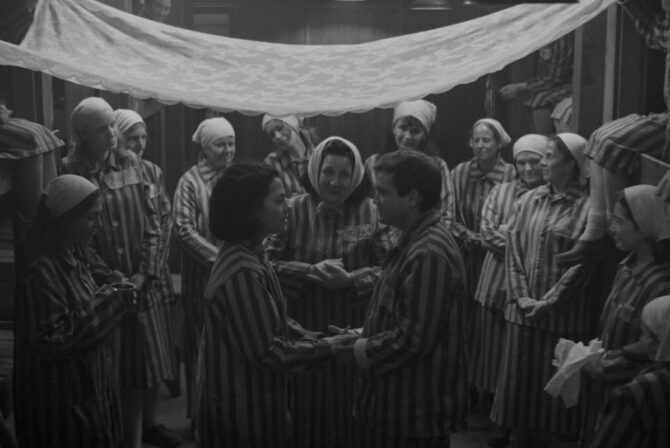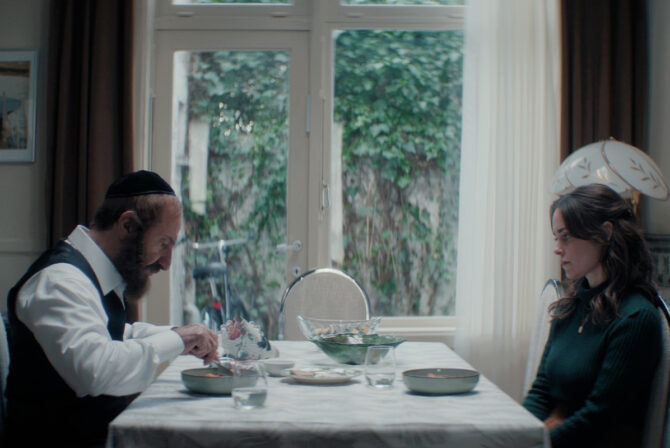My final hike with Talia was an act of defiance and love. This past July, I held her, my 23-month-old daughter, in a front carrier with extra support to prevent her head from lolling side to side.
I pressed her tiny body firmly against mine in the hope that my body heat would comfort and warm her increasingly cold body. She was as weak as I had ever seen her, her body limp—a result of her brain’s inability to function. She was 10 days away from death, and yet she there we were summiting another peak together.
To outsiders, we were a typical family on a hike. Mother, father, son, two daughters, and even grandma hiking together in Lake Placid, in upstate New York. We got kind smiles from strangers at our wholesome visage. You know nothing, I thought to myself. What they failed to see was the fierce determination behind my eyes to focus on joy and life as an act of resistance in the face of the cold hard reality of Tay-Sachs.
This disease, for which there is no treatment or cure, is typically diagnosed once your child stops achieving milestones. The seemingly healthy child you thought you were raising is suddenly one with an expiration date. This degenerative disease gradually takes away all of the baby’s abilities: to babble, to move, and even to smile. The timeline is often uncertain, but typically children die between ages 2 and 5.
Our family climbed many hikes in our short time with Talia. We showed our child the majesty of nature, even as watching her decline showed us its cruelty. Looking back, I can track Talia’s life through the developmental stages of hiking gear she didn’t progress to.
Talia’s first hike in my mind was on her due date. Talia was comfortably nestled into her first hiking pack, my uterus, and I hoped that a vigorous walk with my mother by my side might inspire her to sightsee the world beyond me. On that walk I said her name out loud in full for the first time. Talia Lynn Steckman it’s time to make your grand entrance, I coaxed. But Talia, in her own act of defiance stayed put for another grueling week.
Talia’s first real hike was a mere three days after we returned from the hospital. I nestled her tiny body facing inward into a BabyBjorn carrier and we took her on a small walk through the wilderness near our home. I was determined that our third child beat the record of earliest hike ex-utero that her siblings had set. I felt intense pride that day at our newly complete family, loved holding Talia close, and also felt great relief at being able to hand her off to her father for some of the heavy lifting.
We tried to put Talia forward facing in an Ergo Baby Carrier at 6 months old. Her body positioning never felt right, and her head didn’t seem to be able to support itself. On these hikes, when we got to the summit and had snacks, I had to support Talia’s seated body with mine to prevent her from tipping over.
In our photos, she has a content look on her face as she attempts to suck the juice from an apple or peach, but doesn’t have the strength to hold the fruit herself or the stability to sit on her own. It was the beginning of a season of questions and comparisons.
At 9 months old, we tried Talia in a backpack carrier, as her siblings had done before her. Talia was now receiving physical therapy for low muscle tone, and our schedule was full of doctor appointments to understand the underlying cause. Still in denial, we tried to force her up the ladder in our chain of hiking development. In this pack, there was no question something was wrong with her. Despite being strapped down tightly, her whole body hung awkwardly to the side. This pack would never be right for her and the fear of the future truly set in.
When Talia was diagnosed at 11 months old, we knew she would never hike a trail on her own two legs. The week after her diagnosis we went on a scheduled trip to Lake Placid. On the exact same hill we would climb days before her death, we hiked as a family determined to get on with the business of living. We no longer tried to advance Talia up any developmental milestones. We were simply grateful for the time we still had together.
Talia was now in a newly purchased Lille Baby toddler carrier that could provide the head support that her neck could no longer give. We climbed a challenging peak as the sky dramatically darkened with an incoming rainstorm. The wind from the storm whipped our hair around. I turned her to face inward and used my body to shield her from the elements. She laughed, and she felt her body bounce up and down. I took a selfie of the two of us, knowing that these moments wouldn’t last.
I questioned what my face should look like. Should I look profound in my knowledge of death? Happy in this moment of limited joy? How was it possible to experience profound joy and deep sorrow simultaneously? Those questions mirrored my emotional confusion of that day, and of all of the days of Talia’s life.
In the end I smiled, cautiously at first and then with abandon. I smiled both at the absurdity of feeling happy in that moment and at the joyful discovery that I was still able to smile. Looking at that photo now I see my daughter at the peak of her strength, although she was already defined by what the disease had taken from her. I see myself too, wild haired with a wild smile, already defined by what I would not allow this disease to take from us.








